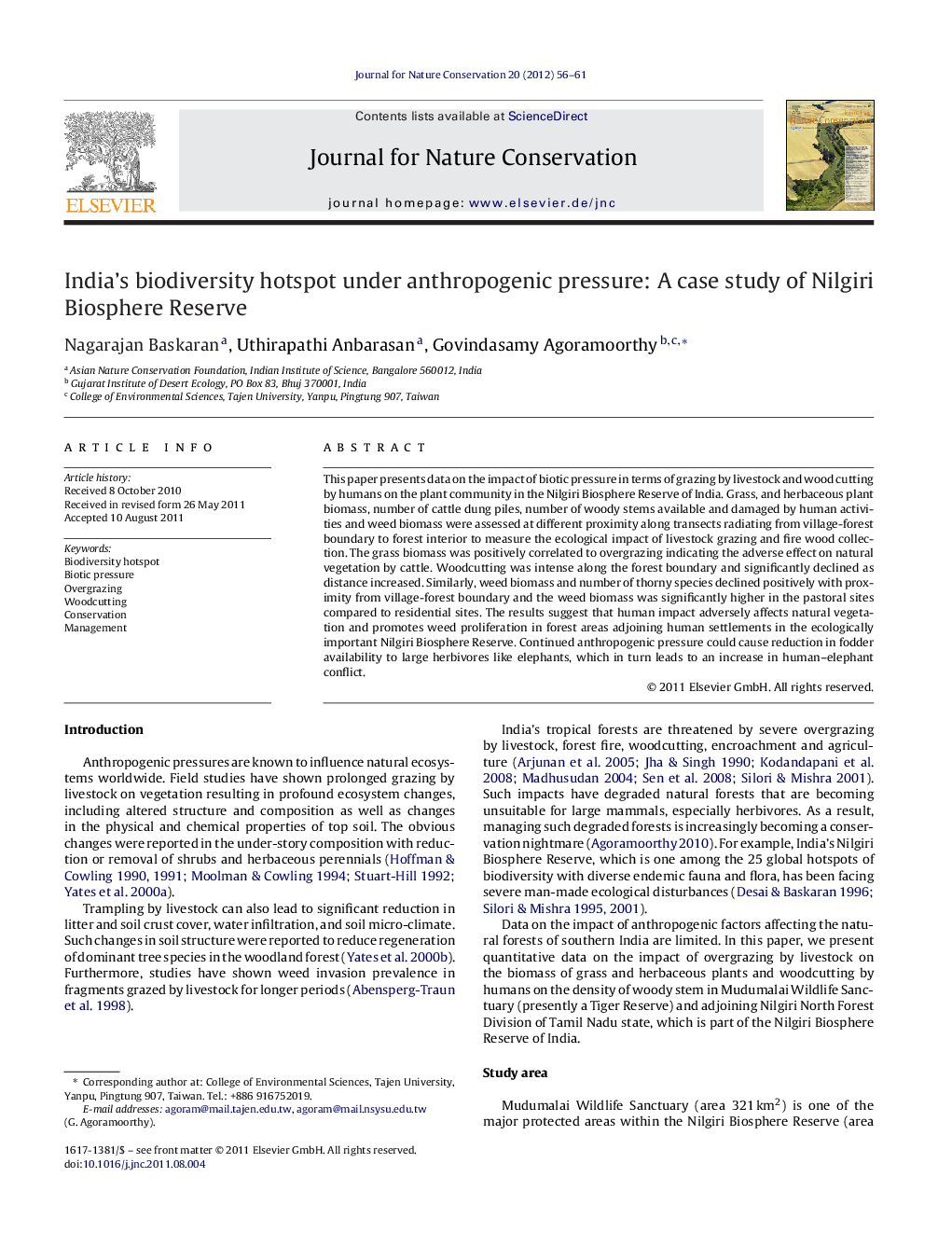| کد مقاله | کد نشریه | سال انتشار | مقاله انگلیسی | نسخه تمام متن |
|---|---|---|---|---|
| 4399966 | 1306900 | 2012 | 6 صفحه PDF | دانلود رایگان |

This paper presents data on the impact of biotic pressure in terms of grazing by livestock and wood cutting by humans on the plant community in the Nilgiri Biosphere Reserve of India. Grass, and herbaceous plant biomass, number of cattle dung piles, number of woody stems available and damaged by human activities and weed biomass were assessed at different proximity along transects radiating from village-forest boundary to forest interior to measure the ecological impact of livestock grazing and fire wood collection. The grass biomass was positively correlated to overgrazing indicating the adverse effect on natural vegetation by cattle. Woodcutting was intense along the forest boundary and significantly declined as distance increased. Similarly, weed biomass and number of thorny species declined positively with proximity from village-forest boundary and the weed biomass was significantly higher in the pastoral sites compared to residential sites. The results suggest that human impact adversely affects natural vegetation and promotes weed proliferation in forest areas adjoining human settlements in the ecologically important Nilgiri Biosphere Reserve. Continued anthropogenic pressure could cause reduction in fodder availability to large herbivores like elephants, which in turn leads to an increase in human–elephant conflict.
Journal: Journal for Nature Conservation - Volume 20, Issue 1, January 2012, Pages 56–61